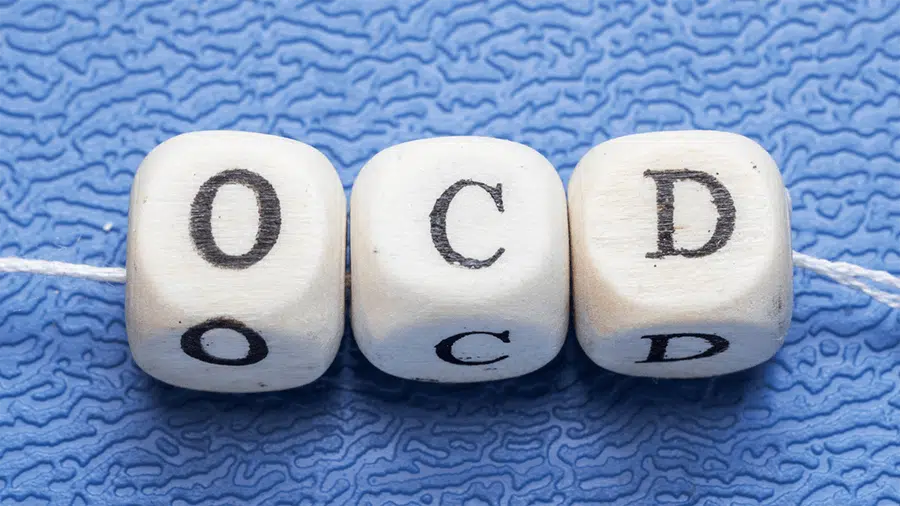Have you seen your long-time officemate’s super clean desk with every document neatly piled and labeled? It exhibits one of the subtypes of obsessive-compulsive disorder (OCD). It is an obsession or need to put things in perfect order or attain proper symmetry. OCD affects more than 500,000 people in Australia.
Or have you known a friend’s child displaying frequent temper tantrums? People with oppositional-defiant disorder (ODD) are often irritable, even at things that generally won’t bother others. It might be ODD, a leading cause of referral for youth mental health services. It has a lifetime prevalence of about 10.2%, which affects slightly more males than females.
Often OCD and ODD have comorbidities with other behavior and mood disorders. These include attention deficit hyperactive disorder, autism spectrum disorder, anxiety, and depression.
The Tomatis® Method helps people with OCD and ODD regulate and process their emotions. Certified Tomatis® professionals perform the auditory brain training. The method plays music, sounds, or speech and processed or filtered through an electronic device or ear. It stimulates the brain to improve the emotions and behavior of adults, adolescents, and children with behavior and mood disorders.
If you have questions about the Tomatis® Method, talk to us at 1300 233 572.

What is OCD?
The American Psychiatric Association published the Diagnostic and Statistical Manual of Mental Disorders (DSM-5). Based on DSM-5, OCD is defined and described as follows:
- Obsession: People with OCD experience recurring or persisting images, thoughts, or urges. The occurrence is unwanted and disturbing, which causes people a degree of anxiety and distress. People with OCD try to disregard or dampen these images, thoughts, or urges by doing a compulsion or act. An example is handwashing.
- Compulsions are responses to an obsession. It may be a repetitive behaviour like handwashing or a mental gesture like counting. These behaviours or mental gestures are ways to lessen the anguish or prevent a feared situation. But these behaviours or mental gestures are excessive and are not related to what they are meant to defuse.
These obsessions or compulsions consume a lot of time which causes distress. It also affects the person’s functioning, work, and relationships.
A person is said to have OCD if the symptoms can not be identified as another form of mental order. Or it is not caused by the physical effects of medications or substance abuse.
In a nutshell,OCD is a chronic disorder of people who have obsessions and compulsions. Obsessions are recurring or repeated thoughts or urges, while compulsions are repetitive behaviors.
People with OCD can not control their thoughts and behaviors. They spend at least one hour on them, which negatively affects their daily life.
Some people with OCD may have a tic disorder, which are bursts of sudden, repetitive movements. It includes eye blinking or head jerking.

What is ODD?
ODD is a disruptive behavior disorder like attention deficit hyperactive disorder (ADHD) and conduct disorder (CD). Sometimes it’s hard to determine if a child has ODD or only strong-willed or stubborn. It occurs during preschool but may develop later before adolescence.
The Diagnostic and Statistical Manual of Mental Disorders (DSM-5) by the American Psychiatric Association includes two criteria for ODD. These criteria are behavioral and emotional symptoms that exist for at least six months. It can be mild, moderate, or severe.
People with ODD have trouble regulating their temper and are often branded as disobedient or hostile. Children and adolescents diagnosed with ODD are at risk of developing anxiety, mood, and substance disorders.
Read more information about OCD and ODD here!

What are the differences in the symptoms of OCD and ODD?
Children, adolescents, and adults can either have OCD or ODD. How would you know if it is OCD or ODD? Let’s test your OCD and ODD knowledge. Imagine yourself in the scenarios with the following symptoms:
Scenario 1: “I keep thinking about rats. They’re dirty creatures. Whenever I wake up, I check under my bed to see if there’s any critter scurrying by. I want to bash its head with a baseball bat.”
The scenario is an example of a sub-type of OCD, which is rumination or intrusive thoughts. These obsessions occur as unwanted thoughts that are disturbing, unpleasant, or violent.
Scenario 2: “Any small annoyance ticks me off. Today in traffic, a guy cut me off so he could beat the red light. I honked repeatedly and overtook him. I cursed at him as I sped by.”
People with ODD have an angry or irritable mood. They quickly lose their temper or get annoyed by people, things, or situations.
Scenario 3: “I wash my hands every time I touch any item that isn’t mine. Even before the pandemic, I washed my hands at least six times a day. I also spray alcohol every after wash.”
The scenario is an example of a sub-type of OCD. Contamination is a compulsion to stay clean. People with OCD have a fear of getting dirty or contracting a disease.
Scenario 4: “My grade 6 teacher said never to leave the classroom during exams. Well, I want to get some fresh air. The teacher reminded me, but I sneered at her as I went out of the classroom.”
People with ODD display argumentative or defiant behavior. They defy rules and refuse to follow people in authority. They often intentionally annoy others.
Scenario 5: “As I lay in bed to sleep, I keep thinking if I locked the main door of the house. I go downstairs and check the lock. I go back to bed. I suddenly think maybe I didn’t lock it properly. I check again.”
People with OCD have the urge to check items constantly. The checking behavior as a compulsive ritual is another sub-type of OCD. It assures them that nothing wrong will happen.
Scenario 6: “The other day, this girl spilled juice on my new shirt. She said she didn’t mean it as she hurried past by me. Today I see her there sitting on a table working on her laptop. I buy a milkshake, and I kind of spilled it on her laptop.”
Vindictiveness is one of the symptoms of ODD. This scenario shows a person with ODD to be spiteful or vengeful due to an earlier encounter.

What are the causes or risk factors of OCD?
- Genetics: Twin studies linked people who have parents or a sibling with OCD and the risk of developing OCD. Recent clinic- and population-based studies also found a link between heredity and OCD. More studies are needed to know more about the specific genes involved in the risk of OCD.
- Brain condition: Imaging studies suggest parts of the brain are involved in OCD. These brain structures include the orbitofrontal cortex (OFC), basal ganglia, and anterior cingulate cortex (ACC). OFC was linked to deficits in learning common in people with OCD.
- Environment: Traumatic exposure has been associated with OCD. A study reveals that the severity of compulsive symptoms was related to emotional abuse, neglect, sexual abuse, or violence.
Other than trauma, a child may develop OCD following a streptococcal infection. It is also called Pediatric Autoimmune Neuropsychiatric Disorder Associated with Streptococcal Infection or PANDAS.

What are the causes or risk factors of ODD?
- Genetics and biological: ODD is inherited based on twin-studies. Other experts suggest a link between neurological make-up and ODD, such as defects in the brain responsible for judgment, impulse control, and reasoning. Another link is an imbalance in brain chemicals.
- Ingrained personality characteristic or disposition: ODD as a behavioral problem can be attributed to unresolved developmental issues during early years. Studies found that difficult temperament as a toddler predicted ODD in childhood.
- Parental practices: A study reveals that harsh parenting practices and parental emotional dysregulation contributed to ODD. Emotional dysregulation refers to the poor ability to control emotional reactions. The higher the level of parental dysregulation, the more a child with ODD has the more difficulties regulating emotions. Higher levels of emotional abuse also appeared to elevate levels of ODD.
- Social and environmental: Researchers examined 926 members from a New Zealand birth study aged 14 to 16 years old. They aimed to see the impact of social, family background, and individual profile on ODD and CD. They found that ODD and CD had similar social and environmental backgrounds.
Social factors include poverty, unstable family ties, and a disruptive environment. Experts also attributed ODD to poor nutrition and exposure to toxins.

What’s the difference in the diagnosis of OCD and ODD?
OCD and ODD are hard to diagnose as symptoms can be similar to other behavioral disorders. OCD is diagnosed through a physical exam, psychological evaluation, and diagnostic tests.
There are no laboratory tests to support ODD diagnosis. Like OCD, people with ODD undergo a physical exam and comprehensive diagnostic test. A medical practitioner gathers information from parents and teachers, too.
The severity of the behavior and adverse reactions or situations with people of authority contributes to the evaluation. It also includes interpersonal conflicts and environmental conditions.
OCD and ODD are separately classified in the DSM-5. The key is to determine the disorder based on specific symptoms as described in the DSM-5.
There are various treatments for OCD and ODD, which are similar. However, the manner of applying the tre

What’s the difference in the treatment of OCD and ODD?
OCD treatments include the following:
- Adults and children can benefit from psychotherapy, particularly cognitive behavior therapy (CBT). It is an effective treatment for OCD as an option to exposure-based treatments (EX/RP).
EX/RP exposes oneself to the actual situation that causes the compulsion but prevents the ritualistic behavior. An example is touching a dirty handrail but not handwashing afterward. A study shows that EX/RP reduces the severity of OCD symptoms. - Medication: Serotonin reuptake inhibitors may help lessen symptoms of OCD. If SSRIs do not work, medical practitioners prescribe antipsychotics.
- Transcranial magnetic stimulation (TMS) is a safe brain stimulation technique. Electromagnetic coils are attached to the scalp, which generates a magnetic field. It stimulates specific regions in the brain associated with behavior. A study suggests TMS as a promising therapy for OCD.
Psychosocial therapies are first-line interventions for people with ODD:
- Parental management training focuses on the parenting skills of children with ODD for behavior change. Parent-child interaction therapy may include video-based programs for feedback and monitoring.
- Functional family therapy involves the modification of family functioning as it plays a role in changing the behavior.
- Cognitive behavior therapy includes an anger-coping program and problem-solving skills training, which are useful for aggressive children.
- Multidimensional therapy incorporates individual, family, peer, and social interventions as a holistic approach.
If ODD persists despite interventions, medical practitioners prescribe medications or antipsychotics. ODD with comorbidities may be given methylphenidate. Risperidone is also effective in the treatment of irritability and aggression.
Does the Tomatis ® Method work for OCD and ODD?
People with OCD find it hard to control their impulses, which leads to repetitive behaviors. Those with ODD have problems relating to authority like parents, teachers, and supervisors. These two behavioral disorders are characterized by an inability to regulate emotions that result in disturbing behavior.
The Tomatis® Method is not a treatment for OCD and ODD. Instead, the Tomatis® Method may serve as an adjunct therapy. A study among university students found that Tomatis® Method promoted self-regulation and behavior change. The researchers identified five themes as a result of their research on the Prospective Conceptual Model of the Tomatis® Method:
- “being self-aware and enhanced environmental sensitivity;”
- “improved study concentration per time frame;”
- “perspective taking, willingness, and ability to listen to others’ opinions;”
- “self-reflection or enhanced inward learning experience;” and
- “boldness, creativity, and open-mindedness.”
There is no exact treatment modality for OCD and ODD. They are personalized and managed with conventional treatments. However, therapies such as the Tomatis® Method may be used together with traditional treatments in regulating and processing emotions. Discover how the Tomatis® Program can help you today!
Françoise Nicoloff
Official Representative of Tomatis Developpement SA in Australia, Asia and South Pacific, Director of the Australian Tomatis® Method, Registered Psychologist, Certified Tomatis® Consultant Senior, Tomatis® International Trainer and Speaker, Co-author of the Listening Journey Series, 40 Years of Experience, Neurodiversity Speaker




